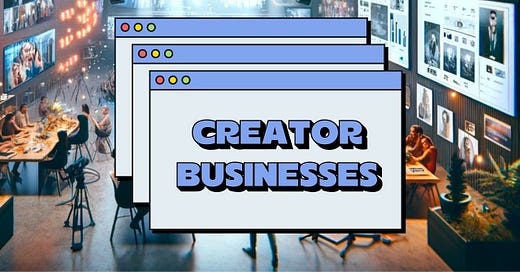👸Rethink Your Influencer Strategy
Hello! Adam Thornhill here. ‘The Podcast Guy’ saving you 10 hours a week.
Enjoy the 120th Podup, with special thanks to ChatGPT Consulting.
Today, we’ll dive into the best insights and ideas from The Calum Johnson Show.
The influencer marketing playbook is overdue for a revamp. The conventional approach of finding a creator in your niche and paying per post is increasingly hit-or-miss. Hunter Hammond and Sahil Bloom, pioneers in the creator-led agency model, offer a compelling alternative.
Creator-led businesses
Whenever I build a new company, the uphill battle is always in customer acquisition and audience building. As an entrepreneur, that’s the glaring gap in my toolkit.
Sahil Bloom and I were constantly trying to find something to work on together. We hit upon the same idea at the same time – there’s a huge opportunity for creator-led B2B businesses.
We’re bootstrapping 12 productized service businesses in 12 months, leveraging Sahil’s insane distribution advantage. Within 5 months, we’re operating 5 companies, with 3 of them doing over 7 figures.
Hunter Hammond
Finding product-audience fit
The question I often hear is, ‘How can I get a creator to help me with my business?’ The short answer is you probably can’t. Not with the traditional approach. With Sahil as my co-founder, it was about finding the right fit.
We asked ‘Is there a fit here for us to do something interesting together? Is there product-audience fit between our business and your audience?’
Everything we’re doing is positive sum. It’s not this transactional notion of ‘Let me work with this creator because they will solve all of my problems.’
Hunter Hammond
Why it matters
Traditional influencer marketing is superficial. It presumes that a creator’s audience will automatically be interested in your product, which is seldom true. What’s overlooked is a nuanced understanding of why people follow that creator and what issues they’re trying to address.
At the very least, aim for an affiliate model to align incentives between creators and your business. For a truly symbiotic relationship, consider a strategic partnership where equity is on the table, much like offering stock options to your top performing employees.
Next steps
Deep dive into audience needs. Before partnering with a creator, understand the pain points of their audience and how your product can address them.
Evaluate product-audience fit. Assess if the creator’s message and audience align with your business goals and the problem you aim to solve.
Test the water. Launch a small-scale project or campaign to validate the product-audience fit and the effectiveness of the partnership.
Forge a strategic partnership. Instead of a transactional relationship, aim for a deeper collaboration, possibly even co-founding a business with a creator.
Think long-term. Keep your focus on solving the audience’s problems, which will naturally align incentives with your business and the creator.
Your thoughts?
Thanks to ChatGPT Consulting for making this post possible…
Struggling with ChatGPT adoption? Then you’re like most businesses:
✖ Employees are resistant to change
✖ Just 19% have tried ChatGPT
✖ Only 4% use ChatGPT daily
Avoid seeing your company being left behind - lead the way instead.
Transform your business productivity in 4 weeks. The accelerator program is designed to make ChatGPT an integral part of your business DNA.
The best part? It's not a one-size-fits-all approach. Get bespoke 1-on-1 ChatGPT training tailored to every person within your business.
P.S. This program has proven results, with 100% of staff reporting over 5.7% efficiency gains, and some staff boosting productivity by 21.3% 🚀💼
86% of readers have decision-making authority or influence. Reach C-Suite Execs, Directors/VPs, Senior Professionals, and Business Owners/Founders with Podup.
Quotes were pulled at different points of the episode. Sentences were left out to make the narrative more concise. Podup is not associated or affiliated with any podcast.






